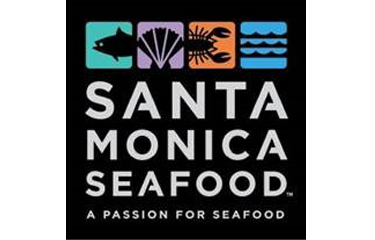Similar to many other U.S. seafood distributors, Santa Monica Seafood’s foodservice sales have dropped drastically due to the coronavirus outbreak, while its sales to retailers have soared.
“It’s mainly foodservice where we are taking the biggest hit, and we will continue to take a bit hit,” Roger O’Brien, president and CEO of Rancho Dominguez, California-based Santa Monica Seafood, told SeafoodSource.
Restaurant, bar, and casino closings have been mandated in several states, and California’s governor – along with governors in other states – has asked restaurants to operate at half-capacity.
Some of Santa Monica’s foodservice customers have had to shift from 30-day payments to 60 days out, or have told the distributor they cannot pay at all. As a result, the company has laid off around 25 temporary workers, but has maintained all other employees, which number more than 750.
“It’s not to say we won’t dig deeper, but we are trying to hang on everywhere we can,” O’Brien said.
Santa Monica is still paying its trade payables on a consistent basis and the distributor’s cash position and available line of credit “have been and continue to be quite strong,” O’Brien said.
While Santa Monica’s restaurant sales have been hampered, the distributor has “significantly” increased sales to grocery retailers, and business at the fish markets and cafes Santa Monica owns is “going bonkers,” O’Brien said.
“That boom is due to the consumer stocking up. That can’t continue forever, but right now, we all know what is happening to the grocery side,” O’Brien said.
Santa Monica is supplying its two markets with seafood twice daily instead of once daily, while its cafes are limited to take-out only.
“We don’t want people congregating at tables, and we need the space in the store for all the market customers. We are taking as many people employed from cafe to work in the market,” O’Brien said.
Santa Monica also runs a successful skin-pack facility in Los Angeles, California, which doubted its revenue in 2018 and 2019, O’Brien previously told SeafoodSource.
The skin-pack business is soaring as retailers increase sales of frozen and value-added seafood in response to the coronavirus.
“We have seen some retail grocers who have closed down their butcher block sections of their store and emptied out cases. They need labor to stock shelves and are looking to put seafood and other proteins in areas where customers are grabbing it themselves,” O’Brien said.
Due to increased demand from retailers, Santa Monica is naturally supplying fewer premium foodservice items and distributing more “staples” such as salmon and tilapia, which are most popular in the U.S. with grocery shoppers.
The shift in species – along with the general slowdown in foodservice sales – has many seafood suppliers concerned.
“We are getting calls frequently from all the suppliers. We are trying to give them comfort, [letting them know] that we are hanging in there well,” O’Brien said. “We will continue to work with them, and we simply need to increase our communication levels.”
Food suppliers and retailers will continue to be needed in this crisis, he noted.
“The U.S. government has said that essential services, such as the pharmaceutical and food supply chain, should maintain their schedules as much as possible,” O’Brien said.
Overall, O’Brien is optimistic about how U.S. businesses will weather this storm.
“I have been in business for 50 years and have seen numerous business challenges. I can’t tell you how many recessions we have been through, as well as labor strikes, the September 11 [terrorist attacks], the American invasion of Iraq, SARS, and, swine flu — all of those were challenges and we survived,” O’Brien said.
“As long as people can relate to the fact that we have survived significant challenges in the past, it will give them peace of mind that we can make it through this,” he added.
O’Brien is also hopeful that Santa Monica will weather the storm. From 1 January through 15 March, the company’s revenue was up “quite a bit over the prior two months of the year,” O’Brien said. He attributes the growth, in part, to the fact that the company is now so diversified.
“We have facilities in several different states and sell through a number of distribution channels. We have a couple of retail stores, our foodservice, and our skin pack operation,” he said.
Last year, O’Brien told SeafoodSouce that his goal is to grow Santa Monica Seafood into a USD 1 billion (EUR 912 million) company.
“For us to survive, we have to have a national footprint so we can go to national retailers and buying groups, and say, ‘We know you want to consolidate your suppliers. Well, we can do it’,” O’Brien said. “I’d love to tell them we can serve 40 out of 50 states of the union. That’s my goal – to color as many states in the union as we can Santa Monica Seafood blue.”







